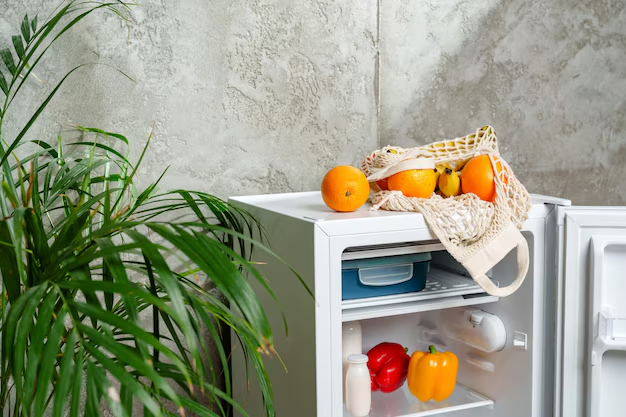How Long Does Salad Dressing Last in the Fridge? A Complete Guide to Storage and Safety
Have you ever found yourself staring into the abyss that is your refrigerator, wondering if that half-used bottle of ranch or vinaigrette is still safe to drizzle over your greens? You're not alone, and the good news is that understanding the shelf life of dressings and learning how to store them properly can help you reduce waste and keep your meals delicious and safe.
In today's article, we'll explore all there is to know about storing salad dressings in your refrigerator, ensuring optimal freshness, and maintaining food safety. We'll break it down into easy-to-understand sections that tackle the basics, delve into different types of dressings, and offer practical tips on maximizing shelf life. 👇
The Basics of Salad Dressing Storage
Before diving into specifics, it's important to cover the general principles that apply to all salad dressings and similar condiments. Keeping salad dressing in the fridge extends its shelf life and minimizes the risk of spoilage. When cooled, the dressings maintain their flavor and texture, ensuring that each serving tastes as it should.
Factors Affecting Shelf Life
Ingredients: The primary determinant of a dressing's longevity is its ingredients. Oil-based dressings tend to last longer than dairy or egg-based ones.
Packaging: Once opened, the storage duration may decrease as air exposure increases.
Preservatives: As with many packaged foods, those with preservatives typically last longer than those without.
General Guidelines
- Unopened dressings: These can generally be stored in a cool pantry, away from direct sunlight, until their expiration date.
- Opened dressings: Once opened, it's best to store them in the refrigerator and consume them within 1 to 3 months for peak quality.
Understanding Different Types of Dressings
Not all dressings are created equal. 🎨 Here's a breakdown of various dressing types and their common storage durations once opened:
Oil-Based Dressings
Examples: Italian, Balsamic Vinaigrette, Olive Oil, and Lemon
- Shelf Life: Typically, these can last up to 3 months in the refrigerator. The oil acts as a natural preservative.
- Storage Tip: Shake well before each use as separation is common but not harmful.
Dairy-Based Dressings
Examples: Ranch, Blue Cheese, Caesar
- Shelf Life: Due to their perishable ingredients, consume within 1 month after opening.
- Storage Tip: Keep these in the coldest part of your fridge, usually the back.
Egg-Based Dressings
Examples: Mayonnaise, Aioli
- Shelf Life: It's best to consume these within 1 to 2 months after opening.
- Storage Tip: Avoid storing in the door where the temperature fluctuates.
Homemade Dressings
Examples: Freshly made vinaigrettes or yogurt-based dressings
- Shelf Life: These generally last about a week due to the absence of preservatives.
- Storage Tip: Store in airtight containers to maintain freshness.
Signs Your Dressing Has Gone Bad
Keeping a keen eye out for signs of spoilage can prevent unfortunate culinary experiences:
- Changes in Color: Any noticeable discoloration can suggest spoilage.
- Unpleasant Odor: A sour or off smell typically indicates it's time to discard.
- Texture Alteration: Clumpiness or separation that doesn't resolve with shaking is another warning.
- Mold Growth: Any mold growth means it's time to toss the dressing immediately.
Practical Storage Tips for Prolonging Shelf Life
Maintaining salad dressing freshness isn't rocket science. Here are some practical, everyday tips to keep yours lasting longer:
- Keep It Cool: Always refrigerate after opening.
- Seal Tightly: Ensure the bottle or container is closed securely to prevent air exposure.
- Use Clean Utensils: Avoid introducing bacteria from other foods by using a clean spoon or pouring directly onto your dishes.
- Label Your Dressings: If you tend to forget when they were opened, label them with the date to keep track of their lifespan.
The Silver Lining of Conscious Consumption 🌿
Understanding how to store and identify when your salad dressings are past their prime can start an exciting journey toward more conscious consumption. By taking small steps to monitor how long items linger in your fridge, you contribute to reducing food waste—a win for your wallet and the planet!
Quick Summary: Salad Dressing Storage Made Easy 🎯
- **🍼 Unopened Dressings: Store in a cool pantry until the expiration date.
- **🍾 Opened Oil-Based Dressings: Refrigerate up to 3 months.
- **🥛 Opened Dairy-Based Dressings: Use within a month and keep cold.
- **🥚 Opened Egg-Based Dressings: Best within 1 to 2 months.
- **🗓️ Homemade Dressings: Consume within a week.
- **😷 Spoilage Signs: Be wary of changes in color, smell, texture, or mold.
- **🔒 Seal and Store: Keep dressings sealed tightly in the fridge.
Conclusion: Embrace Knowledgeable Decisions
The more you know about the subtleties of food storage, the more empowered you become in the kitchen, ensuring that every bite you take is delicious and wholesome. By paying attention to the type of dressing and its specific storage requirements, you'll not only enjoy fresher, more flavorful meals but also take an active role in minimizing waste.
Remember, when in doubt, giving a quick sniff and checking for off-putting visual changes can be your best allies. So next time you reach into your fridge for that zesty vinaigrette or creamy ranch, you'll know just what to look out for. 👩🍳
